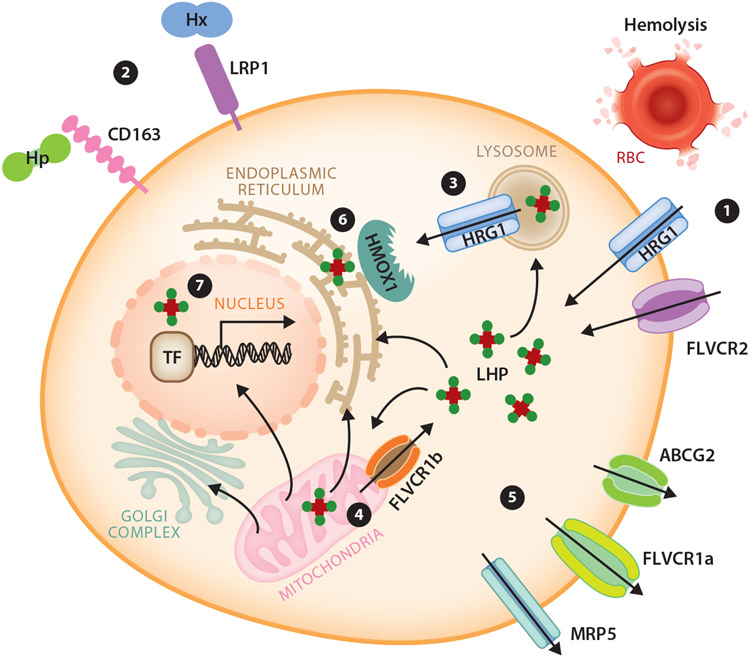Figure 3.
Model of known metazoan heme transport mediators and pathways for intracellular heme trafficking. A cell can autonomously meet its heme requirements by de novo synthesis in mitochondria. (①) It can also uptake heme through the plasma membrane heme importer HRG1, FLVCR2, or via endocytosis of senescent RBCs. Additionally, (②) Hp and Hx are scavenged by membrane-bound CD163 and LRP1 receptor-mediated endocytosis, respectively. Intracellular heme can be imported into the cytosol via HRG1 on endolysosomal membranes (③) and FLVCR1b on mitochondrial membranes (④). (⑤) Export of heme can be mediated by plasma membrane exporters FLVCR1a, ABCG2, and MRP5. To prevent free heme cytotoxicity, heme is degraded by HMOX1 (⑥. Cellular LHP may facilitate intracellular heme trafficking. (⑦) In the nucleus, TFs bind heme to regulate transcription of downstream target genes. Abbreviations: ABCG2, ATP-binding cassette subfamily G member 2; FLVCR, feline leukemia virus subgroup C receptor; HMOX1, heme oxygenase 1; Hp, haptoglobin; HRG, heme responsive gene; Hx, hemopexin; LHP, labile heme pool; LRP1, LDL receptor related protein 1; MRP, multidrug resistance protein; RBC, red blood cell; TF, transcription factor. Figure adapted from images created using smart.servier.com and motifolio.com.

